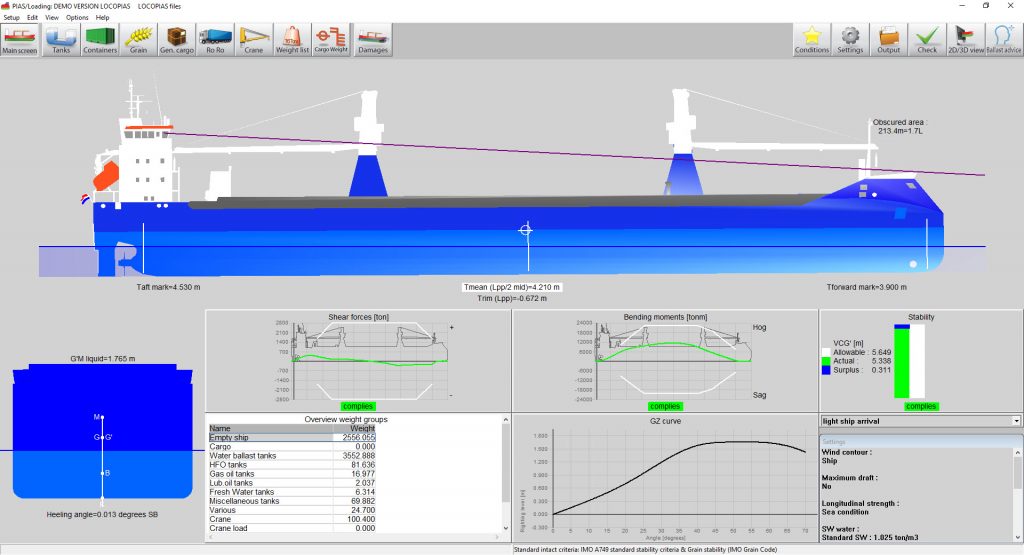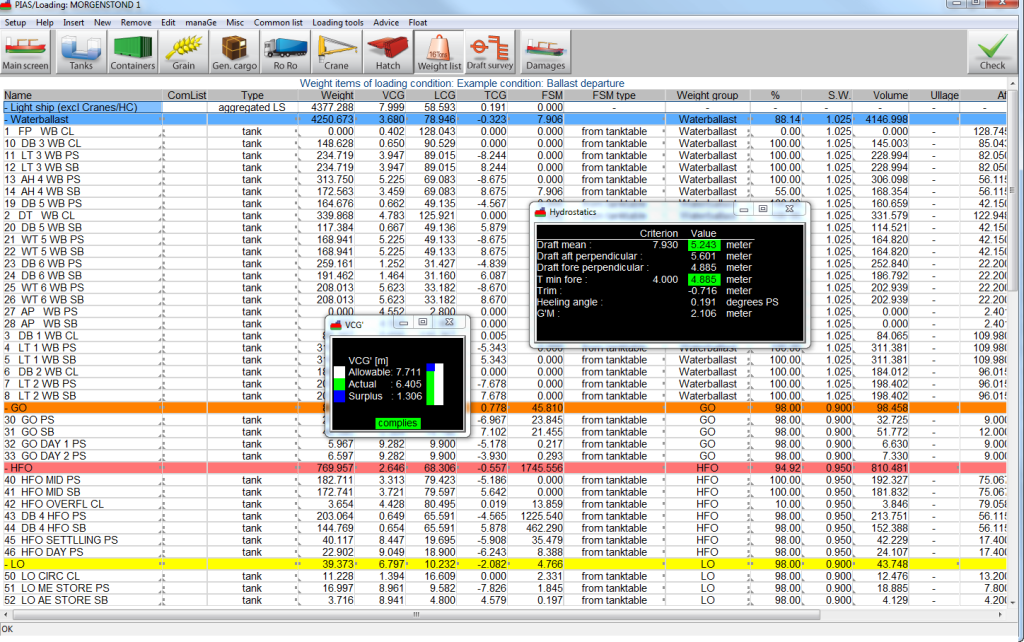PIAS module: Loading
In combination with Layout and Fairway or Hulldef, Loading is the core module of PIAS, for it computes all stability-related aspects of the loading conditions, viz.
- Intact Stability, including (user-configurable) GZ-curve plots and verification against a wealth of intact stability criteria for naval, seagoing commercial, inland waterway commercial, fishing vessels, yachts and hopper dredgers (dr-67 and dr-68). For the full list please refer to manual at sarc.nl/images/manuals/pias/htmlEN/stabcrit.html#stabcrit_criteria
- Damage Stability, with user-defined or generated damage cases, also including GZ-curves of residual stability and verification to a plethora of damage stability criteria, please consult the full list at sarc.nl/images/manuals/pias/htmlEN/stabcrit.html#stabcrit_standard_requirements
- Longitudinal Strength, which is the computation of longitudinal shear forces and bending moments, including graphs and check for compliance with maximum allowable values, at ReadOut Points as determined by the classification societies.
- Torsional Strength, including verification of the torsional moment against the maximum as determined by the DNV rules.
Moreover, the strength of Loading is not solely its computational capabilities, it is the whole module design which contributes to the extremely efficient ship design cycle of PIAS, with tools and functions as:
- Practical infinite numbers of loading conditions, damage cases and intermediate stages of flooding,
- The use of multiple processor cores for fast computations.
- A common database of weight items which can be used infinitely in the loading conditions. Saves a lot of human hours, and secures data consistency.
- Integrated treatment of compartments; just enter weight, volume, percentage or sounding, and all other properties are derived on the fly. Quick and consistent.
- Integrated support for pouring out of cargo or pouring in of seawater of hopper dredgers (also applicable to open top cargo or container vessels), including the effects of a soil & seawater combinations on stability and strength.
- Support for fully submerged vessels (submarines).
- Because SARC’s loading software LOCOPIAS is built on the same software core as PIAS, the specific LOCOPIAS loading modules are also available to PIAS users. Such as the ballast advice and container modules.
To conclude, the entire design and toolkit of Loading is made to let your design work go in the highest pace. And how can we be so sure about that, at SARC? Because we use the software day after day for our design and consultancy work, and we like efficiency, speed and consistency….



